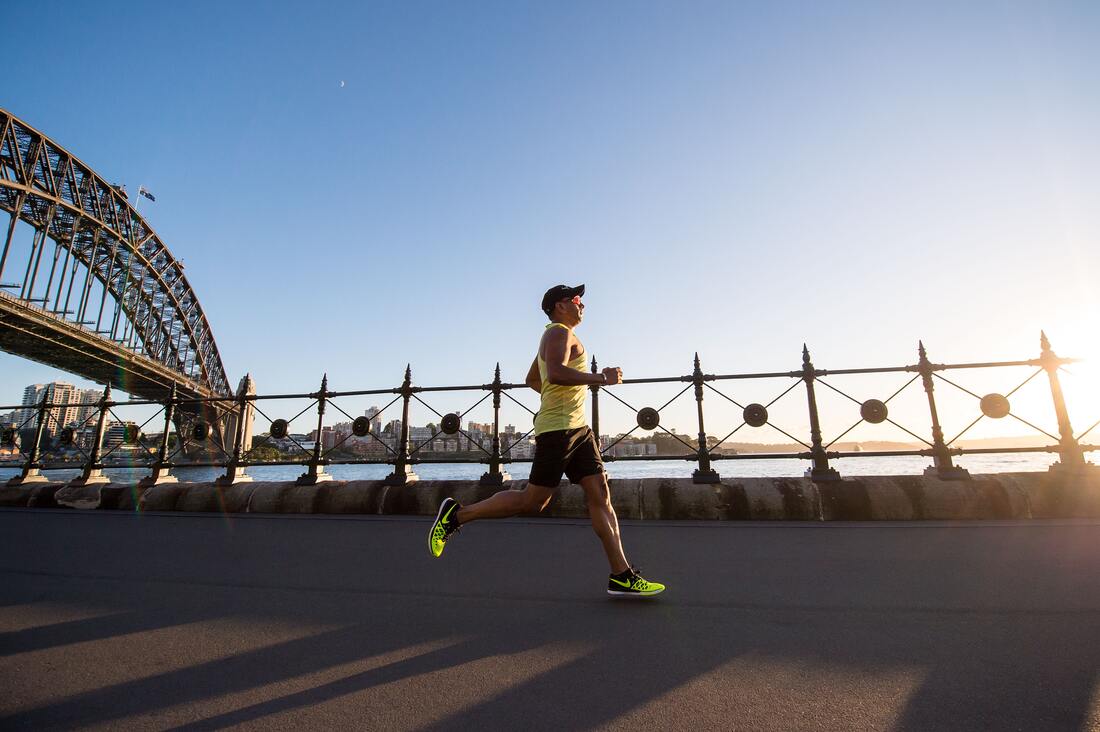|
SEARCH My Blog (Opens in new tab)
How to look stronger, prouder and use less effortRunning slumped is something that I see often. The people running slumped look tired. Here's the irony, when you slump it will make you more tired. Here are three tips to get you looking stronger, prouder, and be able to sustain your running with less effort. I've been running daily for a year on our local trails - it's been a fantastic daily break during our nearly year of working from home. When a fluid runner goes by, it inspires me, but when a slumped runner struggles towards me I want them to hold their head up, breathe more deeply, and find their rhythm. Running every day (from 4km to 12km) requires constant body awareness as I have to adjust my posture, pace, breathing, movement, and foot strikes to avoid repetitive use injuries. I've also learnt a simple truth - when you look better running, you also feel better and use less energy. When you run slumped, you look tired, feel tired, and it's an effort to keep going. But just because you are tired doesn't mean that you should allow yourself to slump into that tiredness. Doing that will only make everything worse for you. Our head is heavy, even heavier when runningFor a start, our head is heavy. Even just sitting with our head forward puts an enormous load on our upper spine. When standing still and tilting our head at a 45-degree forward angle, we place about 20g of pressure on our upper spine. This pressure leads to neck and shoulder pain and headaches. Try lifting a 20kg kettlebell above your head with both arms. Hold it there for a second, then put it down. That gives you the idea of how much pressure a tilted head is constantly placing on your upper spine - for your whole run! Even worse, when running the static pressure of your tilted head is magnified every time your feet impact the ground. Imagine how much effort it takes for our upper back and neck muscles to resist that impact. These muscles tire quickly from this effort. They then call on other muscles and parts of our body resulting in imbalances and pain, e.g. in your lower back. You can almost feel this hurting as you run, right? It's not just the weight of our headIt gets worse. The most insidious outcome of running slumped is compressing your chest and reducing your capacity to breath, both in volume and effort. We can't run comfortably and well without efficient breathing. While you may be able to put up with a sore neck, or shoulder pain, you cannot endure a worsening struggle to get enough oxygen into your lungs. Here's what to do when you feel yourself slumping:
Set up a proud postureSetting up a proud posture means not letting your head slump. Keep your eyes looking ahead on the track. Focus ahead at a level which makes your head feel balanced. This technique is not actually about posture; this is about the feeling of a balanced head. Keep your head in that position as runners come towards you and pass. Your face will look more open, and you're more likely to get a smile! Relax your upper body musclesNow, relax your hands. Squeezing your fists wastes energy. Imagine instead that you are holding a potato crisp in each hand and that you have to deliver them unbroken at the end of your run. Retract your shoulders softly, down and back. No pressure, no strain, no energy. Just feel the balance of your shoulders as they form a brace across your upper back. Relax your arms, bend your elbows at a 90-degree angle, and let the movement flow through your shoulders more in the plane that you are running than across your body. Your arms should be used to counterbalance your strides, not propel you forward, produce force, or use up energy. Breath deeply and rhythmicallyFinally, start breathing deeply. This means not to the top of your chest, but breathing diaphragmatically. This method is the most efficient form of breathing, according to the Mayo Clinic. The best way I know how to do this when running is to imagine that you are breathing down into your stomach. As you breathe towards your belly, pull down with your diaphragm and push the air out into the sides of your lower chest - make your lower chest expand to the side. I even use my hands minutely to conduct my diaphragm "down". Lastly, when you have the feeling this breathing, you can make it most effective by breathing rhythmically. A research group from the University of Utah and the Royal Veterinary College in Hatfield in the UK looked at how humans coordinate their breathing and locomotion. They found that a runner's foot strike can impact how air moves through the respiratory system and that runners tend to naturally fall into an efficient cycle. There is a strong link between our breathing cycle, respiratory and cardiovascular system, the kinetics of motion, and how we pace ourselves most efficiently. It is most efficient to breathe in and out in synchronisation with our foot strikes, and best to use an uneven relationship. That means to breathe in for say 3 steps, and then out for 2, or in for 2 and out for 1 when running harder. The sum of breaths in and out should always be an odd number. Also, move your arms in synchronisation with your breathing and foot movements. Get back into sync when you feel yourself slumpingAs you tire, you'll suddenly notice that you are out of sync. Getting back into sync will help you better control your run and use less energy. Get into sync by firstly raising your eyes and head, breathing deeply, and then syncing your feet and arms with your breathing. As a side-effect, breathing through your diaphragm helps activate the parasympathetic nervous system, which helps reduce stress, conserve energy, and will keep you running happier and longer. You will also find that concentrating on your breathing phases helps you become more body-aware and more aware of your surroundings. By following these tips and pulling yourself out of slumping and into a proud posture, you'll no longer feel that weary painful tiredness that wears you down. Instead, you will feel an accomplished tiredness, and you'll run further with less pain and more pleasure. And you'll look great when I see you coming towards me. Good running! > More posts to help you with EXERCISES > More posts to help you with DIABETES > If you are a @MEDIUM reader my publication Body Age Buster has hundreds of categorised posts which I have written especially for men and women over 50. Follow me on Quora for more health and fitness tips.
If you valued this article >> Follow me Leave a comment >> Share it >> Stay healthy If you have any questions email me and I will get back to you. Latest: get your free customised fitness plan designed uniquely for you.
|
ChoicesSince I was diagnosed at 50 with Type 2 diabetes I've been learning how to do bone-building fitness training which lowers my age. You can too. It's your choice. Walter Categories
All
Archives
May 2023
|

 RSS Feed
RSS Feed



